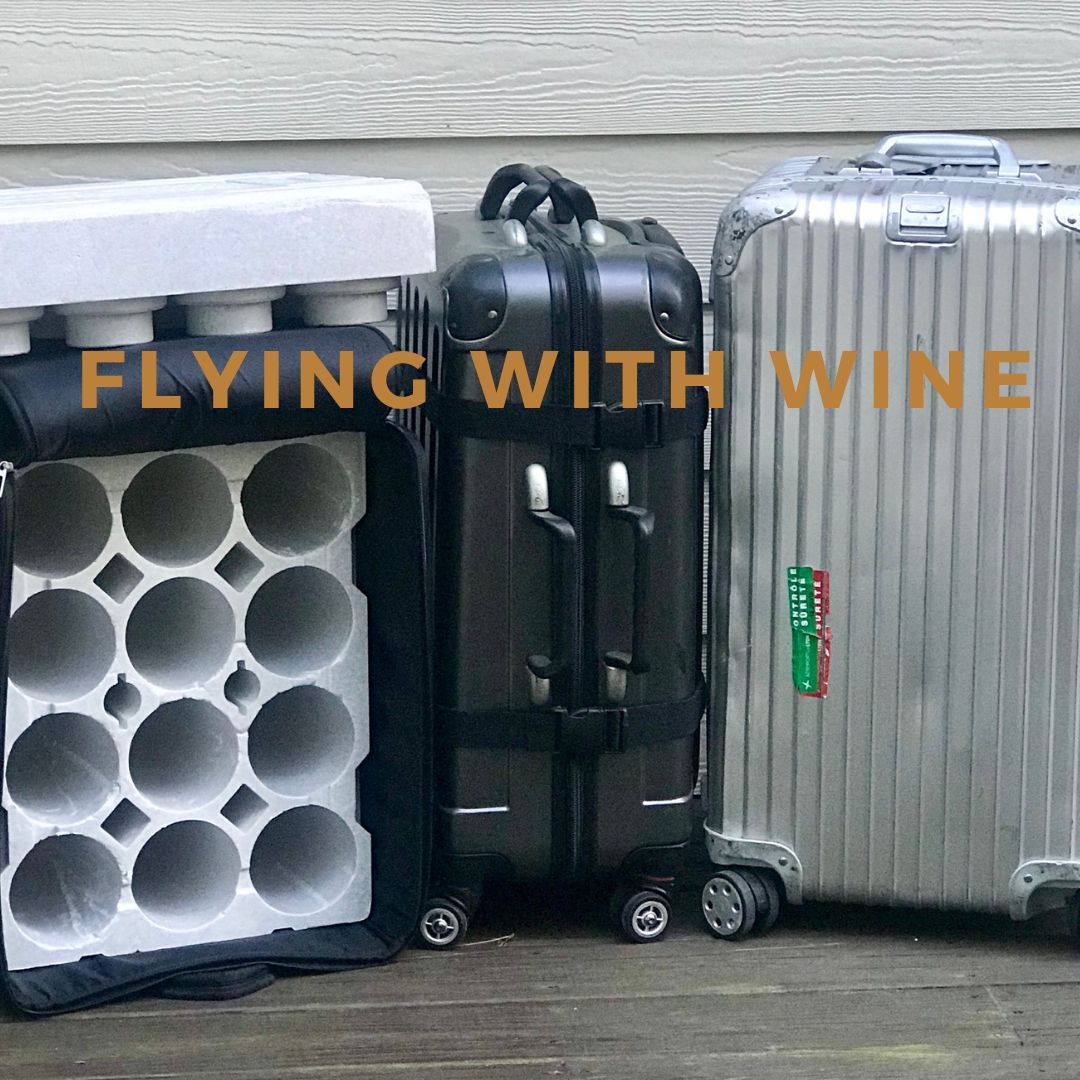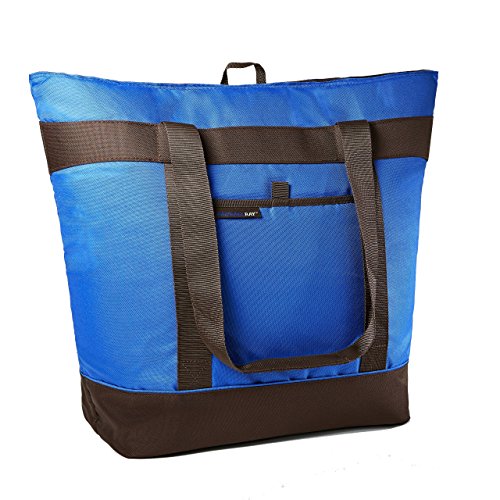KnowWines has flown with wine bottles, beer bombers, liquor, and wine cases domestically (US) and internationally since 2000. Out of about 1000 bottles, we’ve had only one small beer bottle break! Here we give you the lowdown on 20 years of flying with booze (on any budget!).
Before we dive in, here are some reasons you might fly with wine:
Souvenir from business trip
Momento from a vacation
Traveling to a location with poor wine selection
Moving your household domestically and/or internationally
Planning to Travel with Wine
Before booking your airfare, here are a few things to consider:
Traveling one way with wine? Use stackable luggage to reduce luggage fees.
Concerned about luggage weight on return flight? When flying domestically on an economy or premium economy ticket, the luggage weight limit is likely 50 lbs (if you go over this, there are additional fees). If you are flying business or first class, the baggage allowance is typically 70 lbs per bag. Consider upgrading on your return flight for a larger luggage allowance.
Traveling with wine when it is over 70 F at your origin, connection, and destination? Consider shipping as your wine might get “cooked” on the tarmac.
Do wines fly free? Some airlines like Southwest Airlines always have two free checked bags allowance. Other airlines, like Alaska Airlines, have Wines Fly Free promotion for Mileage Plan™ members only. In this promotion, one case (12 bottles) flies free in a cardboard box. Check with your airline for freebies and restrictions!
Start with a Hard-Sided Suitcase
You’ll be placing any wine you’re taking home from your wine country experiences in your checked bag (along with any other liquid over 100 mL or 3.4 ounces). The first step in protecting the wine bottle is the construction of your suitcase.
We strongly recommend a hard-sided suitcase. Why? When there is a luggage showdown in the belly of an airplane, a soft--sided bag versus golf clubs, golf clubs will likely win. Not good news for your wine!
If you are planning to travel regularly with six or more bottles of wine, consider investing in one of these VinGard Valise suitcases. We’ve had ours for three years and love it. We also frequently loan it out to wine-loving friends.
Another option available online and at wineries are wine boxes with wheels and handles. Our experience is that these are much better than transporting a standard box of wine, but they are not as convenient as they could be. In general, they do the trick to get wine home safe and sound, but they have limitations. For a solo traveler they can be tricky to handle. Also, the wheels and strap combination are tricky - it’s a lot like adding an unwilling 50 lb toddler to your luggage! If you have a partner or driver who can help you maneuver luggage and the box (or are using a luggage cart) they are a great option.
How to Keep Wine Cool When It’s Hot
Once you have arrived in wine country, check the forecast. If temperatures are over 70 F, you will need to find a way to keep your wines cool while you drive between destinations.
Take a frozen food bag with you in your checked bag, or pick one up at a grocery store at your wine destination. This type of insulated bag with robust handles and foldability is great to take with you in the rental car if you plan to purchase a few wines each day.
Prevent your labels from getting wet by placing ice in a ziploc bag and wrapping that bag with newspaper or a towel from the hotel or AirBnB. Don’t place wine in the trunk of the car unless it is in a cooler. We love these two gallon freezer bags and always keep them with us in our suitcase for wine travel and any other travel needs.
So, you’ve kept your precious selections cool in the car. Don’t let them go to ruin on the airport tarmac! If the weather in your departing or connecting city will be over 70 F, have your wines shipped.
Will Wine Freeze During Travel?
Flying with wine when it is cold? A bottle of wine will not freeze until it is about 15 or 20 degrees F, and it will take a little while for wine to freeze, especially if it is insulated by your clothes in a suitcase or in a box containing styrofoam.
However, if your travels take you to extremely cold climates, you may want to have it shipped professionally. If you do travel to someplace like Alaska with a few bottles of wine and your luggage is delayed a day and or two, check the cork when it arrives to determine whether or not the wine has been compromised. If the cork is pushed out a little bit then the wine likely froze during transit.
How Much Does a Bottle of Wine Weigh?
Wine bottles vary in size and weight, and unless your AirBnB or hotel room comes with a scale, estimating the weight can be tricky. Bottles vary in size and weight due to a variety of factors, including marketing purposes or traditions in the region of origin.
As a rule of thumb, wine bottles weigh between 2 and 4 pounds. However, we know that when it comes to luggage fees, every ounce counts!
Here are some wine bottle sizes and wine bottle weights you will come across. I include some craft beer bombers, liquor examples for comparison.
A half bottle (or demi) of Riesling at 375 mL weighs 1 lb 9 ounces (708 grams)
A bottle of Whiskey at 700 mL weighs 2 lbs 9 ounces (1162 grams)
A Bordeaux-style bottle at 750 mL weighs 2 lb 10 ounces (1190 grams)
A bottle of Riesling at 750 mL weighs 2 lb 12 ounces (1247 grams)
A Belgian Beer bomber at 750 mL can weigh 3 lbs 6 ounces (1531 grams)
A bottle of Pinot Noir or Chardonnay in a Burgundy bottle at 750 mL can weigh 3 lbs 9 ounces (1616 grams)
A bottle of luxury cult Cabernet Sauvignon at 750 mL can weigh 4 lbs 5 oz (1956 grams)
Invest in Wine Bottle Bags
One of the best wine travel hacks is to travel with wine bottle bags. They don’t take up space when empty, many are reusable, and most weigh under 2 ounces. The best wine bottle bags are reusable, and can accommodate liquor and beer bombers as well. We’ve also used them to transport non-alcoholic bottles like olive oil and vinegar. Things we look for in a good wine bottle bag are a non-adhesive seal (reusable), a cushion of some sort, absorbent pads, material that is not transparent, and no sharp edges.
We’ve used wine bottle bags for over ten years and find that you can get about three years of use out of them if you are traveling three to six times per year. You can get some more life out of them if they separate at the seams by taping the edges with clear packing tape.
Here is our favorite wine travel bag.
When Traveling, Don’t Buy Wine You Can Buy at Home
Don’t mess with flying with or shipping wine if you can get the same wine at home! In the tasting room, always ask, “Can I get this specific wine at home?”. Most tasting room staff are happy to look up the availability of a wine in your country, state, or city.
Wines you should buy at the winery and consider taking home with you:
Wines you love and can only get at the winery
Wine you love that is sold at a discount at the winery
Wine that is not distributed to your state, or is only available in very small quantities or in a city far from your home
Wine from older vintages that may not be available at your hometown wine bottle shop
Economy Wine Carrier
No extra funds for luxury luggage or wine bottle bags? No wine shipper near where you are traveling? Didn’t plan on buying a wine and came unprepared? Never fear.
Simply place a couple of socks around the bottle and insert it into any bag (trash bag, Ziploc bag, hotel laundry bag). With the remaining space in the bag, fill it with absorbent material like underwear, diapers, or clothing to provide some shock absorption.
Packing the Suitcase
Whether you are using wine bags or socks, we take the same approach to packing wines in our checked bags. Here’s our step-by-step guide:
Lay your empty suitcase on the floor, bed or other level surface.
Line the perimeter of the suitcase with shoes and other bulky items.
Place wines in the center of the suitcase.
Place clothing/soft material around the neck of the bottle.
Make sure the bottle won’t move around in the suitcase freely. Loose wine in luggage is how the neck can get snapped.
Checking the Bag
Your bottles are safely secured inside your luggage and you are on your way to the airport. Here are some tips based our previous experiences traveling with wine.
Rental Car Logistics
Traveling with a friend? Have them drop you off at the check-in station so that you don’t have to juggle heavy luggage on the rental car shuttle.
Traveling alone with a rental car? I’ve had luck tipping the rental car return agent to drop me off in my rental car. This option might not be available if the rental car return is very busy.
We don’t know how much it helps, but we always ask for a fragile sticker at the airport to put on the bag.
Insurance
Check with your credit card and airline for insurance options. Some airlines will cover wine up to a certain value when it is checked in a cardboard box with styrofoam, however most will not.
Fragile Sticker
I’ve noticed no difference in how my luggage has been handled when someone places a Fragile sticker on my bag. However, that bright sticker can bring some temporary psychological relief during a hectic time!
Don’t Drink Your Wine As Soon As You Get Home
Once you get the wine home, your wine may suffer from temporary bottle shock (or bottle sickness). This means that the wine might temporarily taste muted. Let the wine sit on its side for a week or two and it should return back to normal.
While we don’t necessarily know what causes bottle shock, we do know that there are a lot of complex components in wine that can be negatively impacted by heat and shaking.
Bottle shock does not occur with all wines. A younger wine might recover quickly, while an older wine or wines heavy in sediment might take longer to recover from bottle shock.
Know the Rules and Pack Cash or Check when Flying Internationally
When flying domestically and into the United States, TSA rules do not limit the amount of wine you can check, with one exception: if your wine has more than 24% alcohol. Since most wines have less than 24% alcohol, this is not a problem with the TSA.
Some states do have regulations on the amount of wine you can bring in to the state for personal use. It’s best practice to check your state law online especially if you live in a “control state.”
If you are flying into a “dry” country, or country that limits alcohol import due to religious regions, check with that country’s equivalent to TSA for rules and regulations.
We always declare wines when we are traveling internationally. Simply declare the items on your customs form (paper or electronic) or at the Global Entry kiosk. Enter the amount of goods. If the amount is under the exception, the customs agent will wave you through. Sometimes the customs agent will not charge you if the amount is near the exception. If it is over the exception, they will calculate the charge and you can pay with US currency or with a personal check. The charge is typically about 4%, so for $1000 in wine this could be $40.
Shipping Wine
So you’ve found a great wine while traveling. Ask the winery about their shipment options, as they can vary significantly between wineries. Costs may vary due to the distance the wine needs to travel, whether the wine is being shipped to a home or business, how many wines are in the shipment, and the rate negotiated with the shipper. Most wineries will ship directly to you when temperatures are cooler, or will use refrigeration during hot months.
If you’ve purchased bottles from several different wineries and want to ship those, use a wine shipper like the ones listed below for temperature controlled shipping options:
In Napa Valley: Adams Street Shipping
In Sonoma: Bodega Shipping Co.
In the Willamette Valley, Oregon: Newberg Mail Room
If you’re worried your wine may not have been shipped properly, here’s an article to help you determine if your wine is bad.
Summary
We hope you find that collecting wine and bringing it home from your travels is a fun and rewarding adventure. It’s provided us great pleasure, especially the part when we share our finds with friends and family.
Cheers!






